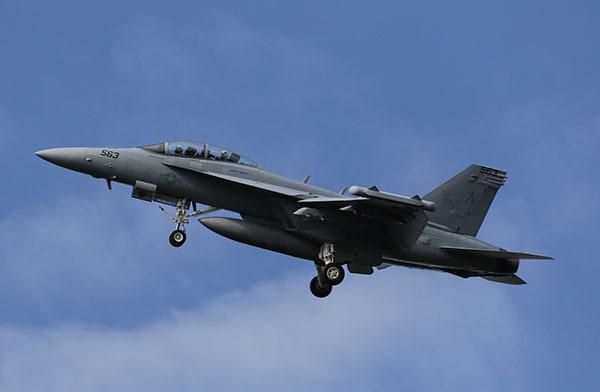Navy officials say a plan to introduce electromagnetic transmitters to its electronic-warfare training on the Olympic Peninsula is no threat to people, animals or the environment.
In fact, they say, the transmitters are no more powerful than the output of a television news van.
But that isn’t deterring so many people from commenting on the plan that the U.S. Forest Service is delaying its decision on whether to grant the Navy a special-use permit in order to sort through the comments.
MORE THAN 3,300 people sent comments to the Forest Service, so many that the agency hired a contractor to analyze them, said Glen Sachet, agency spokesman. Most of the commenters are not in favor of the plan because of concerns about jet noise or electromagnetic radiation.
A decision isn’t expected until next year.
“We take public comment very seriously,” Sachet said. “Just as we take the proposed application seriously.
“We are deliberate and careful about how we analyze the proposal.”
THE DEPARTMENT of Natural Resources doesn’t want anything to do with the project. The Navy originally planned to use DNR roads, but hasn’t made a formal request.
State Commissioner of Public Lands Peter Goldmark sent Navy officials a letter in February that said, “we would not be interested in participating in this training exercise.”
Goldmark’s letter didn’t provide reasons.
A representative for the agency contacted by the Whidbey News-Times declined to provide more details.
“I’ll let the letter speak for itself,” said spokeswoman Sandra Kaiser. “However, if the Navy were to make a formal proposal, we would certainly give it careful consideration.”
THE NAVY would like to add a fixed emitter site at Naval Station Everett Naval Station Annex Pacific Beach on the Olympic Peninsula. It looks like the white globe-like structure visible in Oak Harbor on Maylor Point, only smaller.
The Navy also wants to add three mobile trucks equipped with emitters. The Ford F-550 trucks would resemble TV news vans with antennas and an operations cab on the back.
The electromagnetic transmitters emit signals using frequencies similar to those used by Wi-Fi devices, cordless phones and weather radar systems. Power output of the emitters ranges from 100 to 300 watts.
Commercial radio stations, in comparison, have antenna power output of 100,000 watts or more.
THE NAVY is seeking permission from the Forest Service to let the emitter trucks drive on their roads. The plan doesn’t change where aircraft fly or at what altitude, and the Navy doesn’t expect more aircraft noise.
The Navy’s plan does include more flights.
The Navy expects an estimated 10 percent bump in the average number of flights, which during the past two years was about 1,250 a year.
EA-18G Growlers from Whidbey Island Naval Air Station already fly training exercises over the Olympic Peninsula.
When conducting electronic-warfare training, pilots use simulations inside the cockpit or they fly to Mountain Home Air Force Base in Idaho to use emitters there.
MOBILE EMITTERS on the peninsula would provide more realistic training comparable to what pilots would encounter in hostile territory, said John Mosher, Northwest Environmental Program Manager for the U.S. Pacific Fleet.
“There is some perception what we are proposing is new or different,” Mosher said. “We’re adding equipment to make their training better and more effective.”
The Navy contends it could also save fuel, travel and maintenance costs by placing emitters on the Olympic Peninsula — about $4.6 million a year, he said. Shorter flights also would save wear and tear on the Growlers, extending the life of a multi-million dollar aircraft.
TRUCK-mounted emitters would be parked in remote areas on Forest Service logging roads, selected because they are not popular with hikers or hunters.
The emitters suspended above the ground, send out a narrowly-focused electric signal pointed skyward.
“The antenna is at least 14 feet off the ground,” said Mike Welding, public affairs spokesman for NAS Whidbey. “To cause harm, you’d have to levitate in front of the beam.”
Risk to animals or humans would only occur if they put themselves in the direct path of the signal, close to the emitter, for an extended period of time.
As a precaution, the Navy implemented a 100-foot zone around the vans and instruct crews to shut down the emitters if people or animals come too close.




